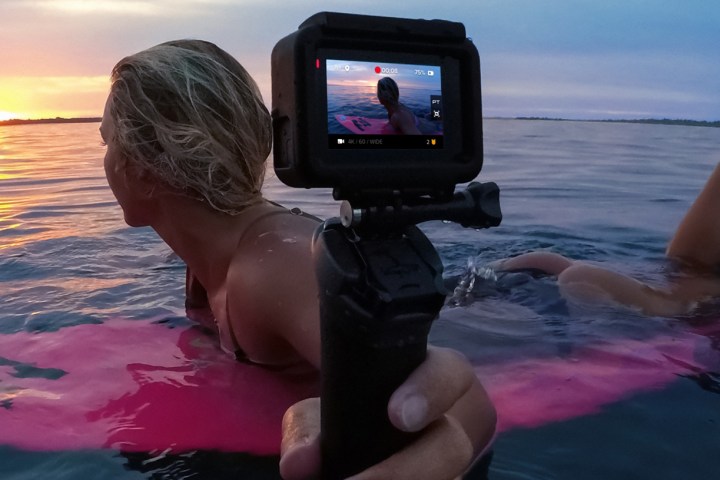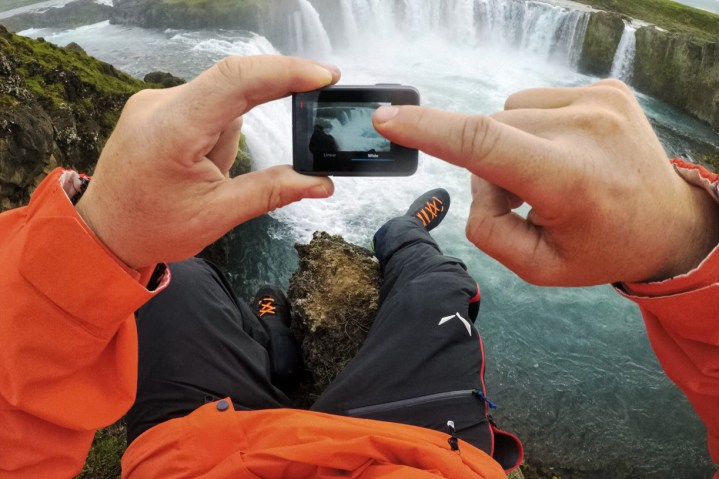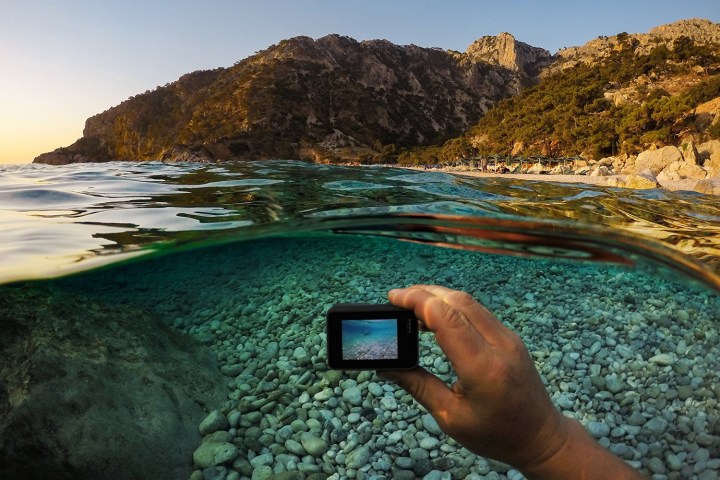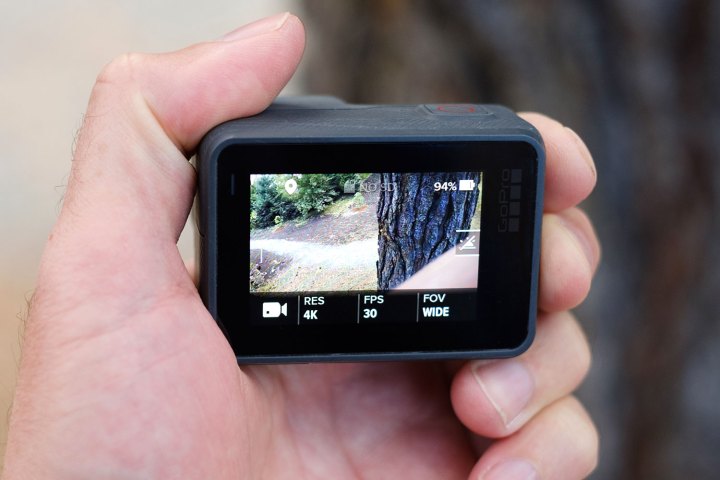
But there’s only one GoPro, and although the California-based company wasn’t the first to make a compact camera capable of capturing photos and video in extreme conditions, it was the first to make it mainstream, and to this day its cameras remain some of the best.
What is a GoPro, though? Read on to find out more about the little marvel that birthed a new industry.
So, what makes a GoPro?
The GoPro camera was originally designed by current CEO Nick Woodman as a compact means to capture photos and videos of him surfing. While the devices are often still used for this purpose, the company has come a long way in the 15 years since its initial inception, and GoPro cameras are now used by all manner of extreme athletes and adventurers, in addition to more casual users.

At its core, a GoPro is a small camera the takes the best qualities of point-and-shoots and camcorders and packs them into a rugged frame that’s smaller, waterproof, and virtually indestructible. Inside the cuboid design is an image sensor, processor, ultra wide-angle lens, and up to three microphones for recording audio in different conditions. The users interface is made up of just two or three buttons, and the Hero5 Black and Hero6 Black models feature touchscreens for more control.
Imaging capabilities
Although not necessarily the most important component, a defining element of a GoPro is its lens. Rather than using a standard lens, GoPros — like many other action cams — use an extremely wide lens. What this does is increase the amount of scenery you capture in the frame, making it easy to frame your shot. Mount it to your handlebars or the side of your helmet, and you can rest assured that it sees just about anything that happens in front of you.

But it’s not only the lens lending credit to the impressive video GoPros capture. GoPro’s new Hero6 Black captures 4K video at 60 frames per second (fps) and Full HD 1080 at up to 240 fps. This isn’t just impressive for such a small camera — few interchangeable lens models have achieved 4K/60, with the $2,000 Panasonic Lumix GH5 being the first. As for still photography, the Hero6 shoots 12-megapixel images with features such as WDR (wide-dynamic range, GoPro’s lingo for high-dynamic range or HDR) and RAW file capture. And a new image processor — a first for GoPro cameras — helps improve performance and image stabilization. GoPro has managed to put all of this into a camera that’s not much larger than most DSLR batteries.
GoPros can be used as standalone cameras, but thanks to a great mobile app, they also pair perfectly with Android and iOS devices, allowing you to add more functionality and versatility. Using built-in Wi-Fi and Bluetooth, users gain full control over their GoPro camera and can even display a live feed of what’s being captured right on their mobile device.
In fact, software is what really makes GoPro outshine the competition. Sure, you’ll find cheaper cameras with similar specs, but what they lack is GoPro’s unification of hardware and software. Its Quik app, for example, takes your footage and automatically assembles them into a short, shareable videos ready for social media.
Endless mounting options
Another component of the GoPro that has made it so ubiquitous is its versatility when it comes to mounting. Even the first-generation model was small enough to be mounted in tight, obscure locations. In fact, GoPro’s mounting system has become so ubiquitous that many other manufacturers make cameras that are compatible with it.

From standard bike mounts, to suction cup mounts, to aerial mounts for drones, you’ll be hard pressed to find an object a GoPro can’t be attached to by some means or another (a pair of zip-ties will even often get the job done, for a DIY approach). Add waterproofing and the ruggedization of GoPro’s most recent action cams, and you have yourself a nearly indestructible camera that can be placed anywhere you can imagine. We’ve compiled a list of some of our favorite GoPro accessories.
Limitations
GoPro cameras are great for hands-free, point-of-view recording — but that doesn’t mean they can replace a camcorder or larger DSLR or mirrorless camera. For advanced users, a GoPro’s lack of fully manual control may be problematic (you can set exposure compensation using the Protune feature, but you have no direct control over aperture and shutter speed). The lack of buttons and dials also means you’ll have to rely on the touchscreen or your smartphone to make changes, which is fine for set-it-and-forget-it adventure filming, but isn’t great if you need to make adjustments on the fly.
Image quality, while good for a small action camera, is another area where a camcorder or interchangeable lens camera will come out ahead. Mirrorless cameras and DSLRs use significantly larger imaging sensors, which capture more light and thus lead to superior image quality, particularly when you have to shoot in low light conditions. But even small-sensor camcorders benefit from built-in zoom lenses, which offer a variety of perspectives without cropping the image, as a GoPro does when selecting narrower fields of view.

However, it’s not GoPro’s job to compete with such cameras. If you’re searching for a sweet and simple solution to capture your adrenaline-fueled adventures, or just a compact means to record your family vacation, it’s hard to argue against picking one up.
For a more in-depth look at what GoPro model is best suited for your needs, check out our in-depth guide. We also have a few tips and tricks to get you started, along with a roundup of the best accessories.


